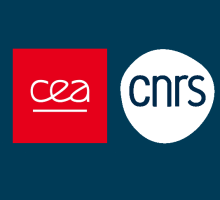Templates and electrodeposition
Travis WADE, Marie-Claude CLOCHARD
It is possible to grow many materials such as semiconductors, semimetals (i.e. topological insulators - TI) and metals by electrodeposition. Metal salts of the desired material are dissolved in an aqueous solution, electrolyte. Deposition is performed by the application of a current or potential between two conducting electrodes submerged in the electrolyte and connected through a potentiostat. In this way, it is relatively easy to deposit films on one of the electrodes, cathode, by the cathodic reduction of the dissolved metal cations. The dimensions of the film are the same as the cathode and the thickness is controlled by the deposition time. Thin-films from sub-nanometer to tens of microns are commonly made. Nanoporous membranes are plastic or inorganic films with nanopores through the films. If a nanoporous membrane covers the cathode during electrodeposition the deposition will be limited to the nanopores and instead of growing thin-films, nanowires can be made.
The goal is to fabricate measurable nanostructures, films and devises. The use of nanoporous membranes as templates for growth of nanowires by electrodeposition is a fairly common technique. After the nanowires are grown usually one dissolves the membrane inorder to liberate the nanowires which are then contacted by lithography. It is convient; however, to measure the nanowires when they are still in the membrane. A metal film can be vapour deposited on one side of the membrane as a cathode for electrodeposition. On the other side of the membrane a very thin film can be vapour deposited. This film is so thin that the nanopores are not completely covered. During the deposition the nanowires will grow until they touch the very thin film and are thus contacted on both ends. The nanowires are now ready for two-point transport measurements. By measuring the resistance of the membrane during nanowire deposition it is possible to contact a single nanowire since growth is inhomogeneous thus one wire reach the thin contact film first and electrodeposition can be stopped. For four-point measurement it is always possible to dissolve the membranes and recover the nanowires for lithography. Films have contacts vapour deposited through a mask.

Nanoporous membrane templates. Polymer membranes such as polycarbonate are available commercially. PVDF membranes are prepared in the LSI by chemical etching after irradiation at GENIL (CIMAP, Caen France). AAO membranes are available commercially or the can be made in house.

Scheme of the electrodeposition of nanowires in a nanoporous template. The potential is controled by a potentiostat through a reference electrode, not shown. The resistance in the membrane is monitored by a potentiometer.

Examples of template assisted electrochemical growth of nanowires. Figue 1. TEM photo of an electrodeposited nickel nanowire. The template was a polycarbonate membrane. The nanowire appears to be polycrystaline with a rough surface. Figure 2. TEM photo of a Sb2Te3 nanowire deposited an AAO template. The inset diffraction pattern shows that the nanowire has very small crystallites on the order of 2 nm (photo by Pierre-Eugene Coulon, LSI). Figure 3. SEM photo of Sb2Te3 nanotubes electroseposited in an AAO template. The tubes are not complete however as the nanotubes become nanowires at the end of the electrodeposition.


